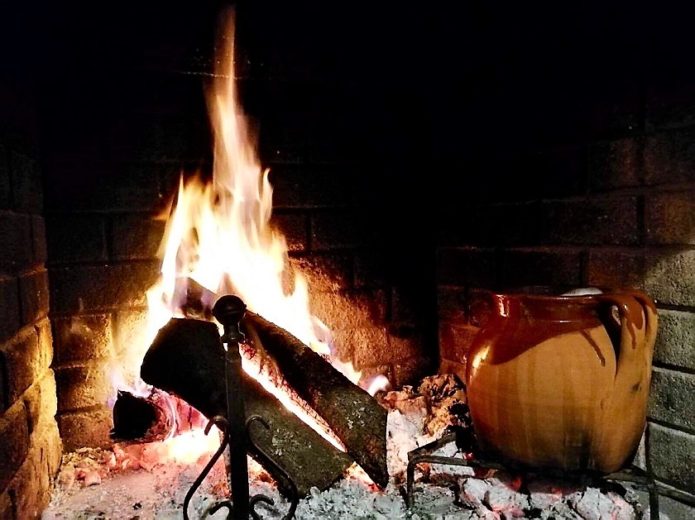The renowned florentine bread soup
In older times, a chilly winter day in the countryside was often warmed up by a pot of hot vegetables soup, the ‘ribollita’ or ‘minestra di pane’ (bread soup). A typical peasant dish made from scratch, that deepens its roots in the Middle-ages. Farmers used to prepare a big batch of this hearty vegetable and beans soup, usually on a Friday so they would eat it over the weekend. That’s because not only did they had to make it last for as much as possible to feed the entire family, but it turned out to be even better the day after. So initially they ate the soup with a lot of white Tuscan bread chunks dipped into it (‘minestra di pane’- bread soup) and then re-boiled the leftovers the day after (‘la ribollita’ – the re-boiled bread soup).
Ingredients – cavolo nero
To this day, the Tuscan bread soup still remains the best way to keep us warm during the cold season and load up on our daily helping of vegetables, because of its perfect combination of carbs, legumes and veggies.
The main ingredient, the one that and gives the whole character to this dish, is the Tuscan kale (or lancinato kale). It’s mandatory for an authentic taste, because you can’t name it ‘ribollita’ if you don’t have the black-leaf kale. We call it ‘cavolo nero’ (translated black cabbage), and it’s a leafy, dark-green type of cabbage, packed with more than 50% of the RDA of vitamins A, C and K, and rich in antioxidants and other essential nutrients, not to mention it’s very low in calories. You can find this super ingredient in every Tuscan farmer’s orchard, from November through spring and it’s best eaten freshly picked, during the cold season.

The recipe
So let’s cut to the chase and talk about the best recipe of ‘Tuscan bread soup’ you’ll ever have. This has been passed down through generations and it’s part of our family’s comfort food cookbook. It’s so simple you can’t go wrong, and so delicious that it’ll fill your house with that special dinner smell that’ll make your tummy rumble.
You’ll need:
a generous amount of extravirgin olive oil freshly cold-pressed
300gr of dry borlotti beans
400gr of Tuscan kale
3 carrots
3 potatoes
1 celery stalk
1 twig of thyme
2 cloves of garlic
2 thick slices of Tuscan prosciutto pork ham
In a large pot over a livery fire, pour a generous amount of extravirgin olive oil and add the prosciutto, the carrots, the celery and the onion well chopped. Cover with its lid and stir-fry for about 5 minutes. Add in the rest of the vegetables cut into pieces, the thyme and the beans. Make sure you keep the pieces quite small, the soup should be thick but not chunky. Now pour in at least 1 liter of hot water and 3 four-fingered pinches of salt. Lower the flame, and cook for at least 90 minutes, covered with a lid. Serve this soup piping hot, with a grinding of fresh pepper and chunks of Tuscan white bread dipped into it, stingily rubbed with garlic and generously sprinkled with Tuscan extravirgin ‘olio novo’.
A night in the fridge will encourage all the flavors to blend together beautifully and all you’ll need to do the next day is bring the whole pot to a boil again, and enjoy a hot bowl of wonderful ribollita.
The season is just right to taste this Tuscan basic recipe, so why not give it a try and amaze your family with a new delicious and super-nutrient dish that will delight your senses and warmup your winter holidays!
Oh, and remember: when in Italy during the summer months, please don’t ask us for a pot of ribollita, it’s definitely off season! Have a holly jolly winter everyone!






 Anyway, don’t expect to come across onions at every corner, when visiting Certaldo. Almost every farmer here grows its own, for their families’ consumption or local trading. So if you’re curious and looking for these sweet red gems, your only chances are the weekly
Anyway, don’t expect to come across onions at every corner, when visiting Certaldo. Almost every farmer here grows its own, for their families’ consumption or local trading. So if you’re curious and looking for these sweet red gems, your only chances are the weekly  Did we get you mouth-watering yet? Then here’s the recipe for you!
Did we get you mouth-watering yet? Then here’s the recipe for you!